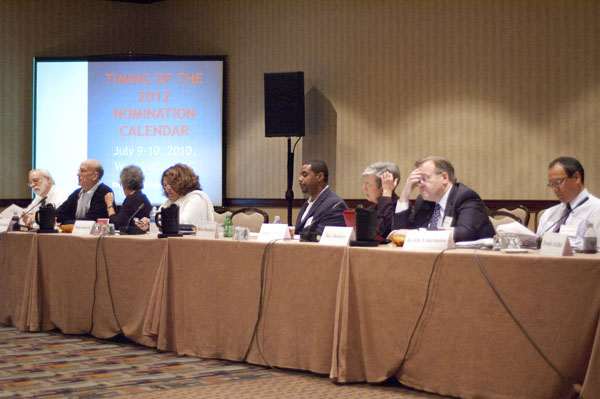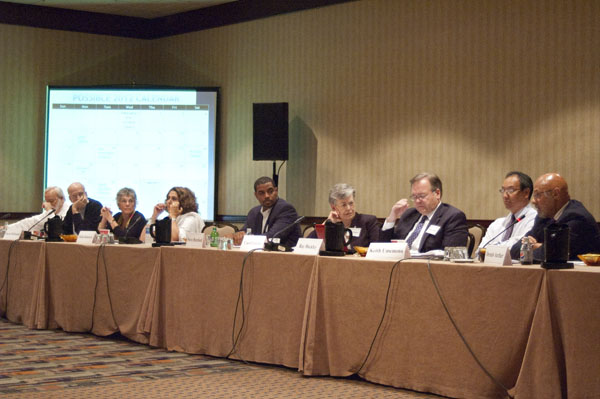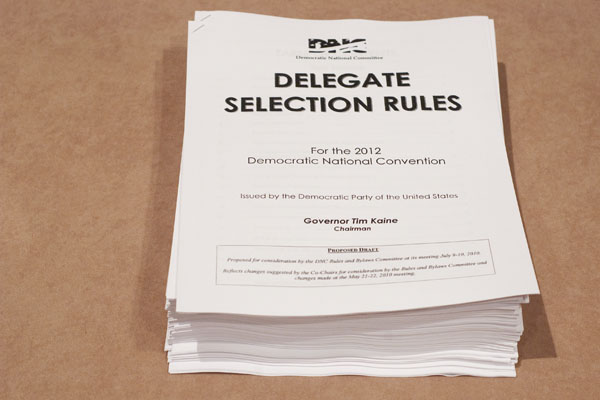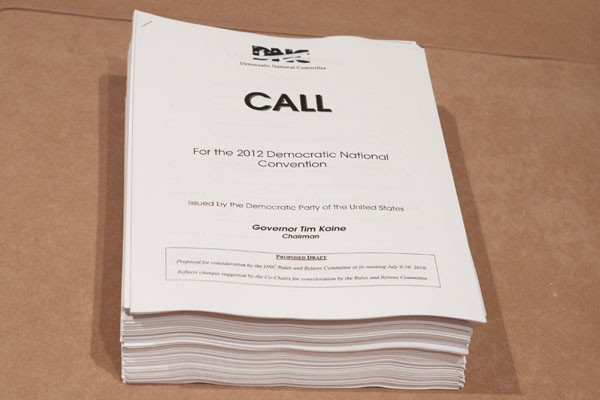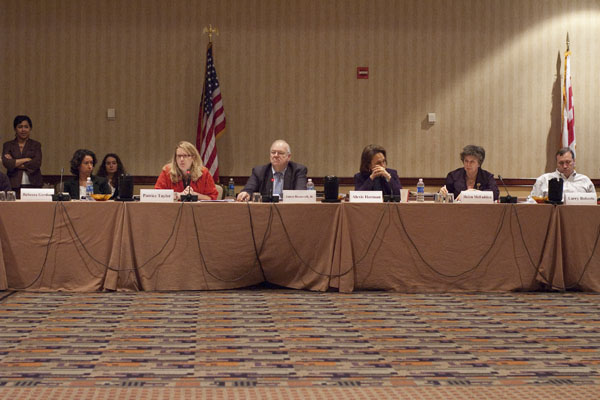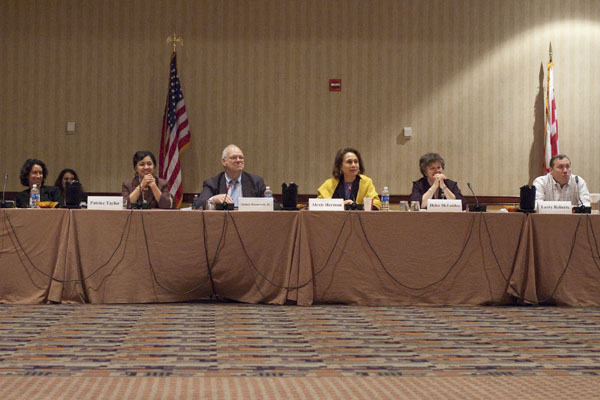
Acting on the recommendations of the Change Commission, the RBC proposes to increase the number of base delegates, thereby reducing the influence of the so-called superdelegates.
This meeting marked the first unveiling of a possible 2012 nominating calendar. For the Democrats, the pre-window period would see Iowa go on February 6, New Hampshire on February 14, Nevada on February 18, and South Carolina on February 28; the window for the rest of the states would open on March 6. (Republicans are considering changes which parallel the Democrats' moves). If these rules are finalized and adhered to the nominating process will be pushed back a month from what happened in 2008, and some thirty states will have to adjust the dates of their presidential preference processes.
The RBC is not considering any changes that would affect the postion of the privileged early states, although member Dennis Archer, the former Detroit mayor advocated at some length that the Committee should start looking forward to 2016 and thinking about giving other states the opportunity to go early. The Committee opted to take that matter up after the November 2012 elections.
The Committee also considered the question of bonus delegates to encourage states to go later in the process and to encourage micro-regional clustering, as happened with the Potomac Primary in 2008. However, member Elaine Kamarck pointed out that bonus delegates had had a negligible effect in 2008.
The RBC is seeking to finish its work in time for the DNC Fall Meeting in St. Louis, August 19-20 so that the full DNC can approve the Delegate Selection Rules and Call.
